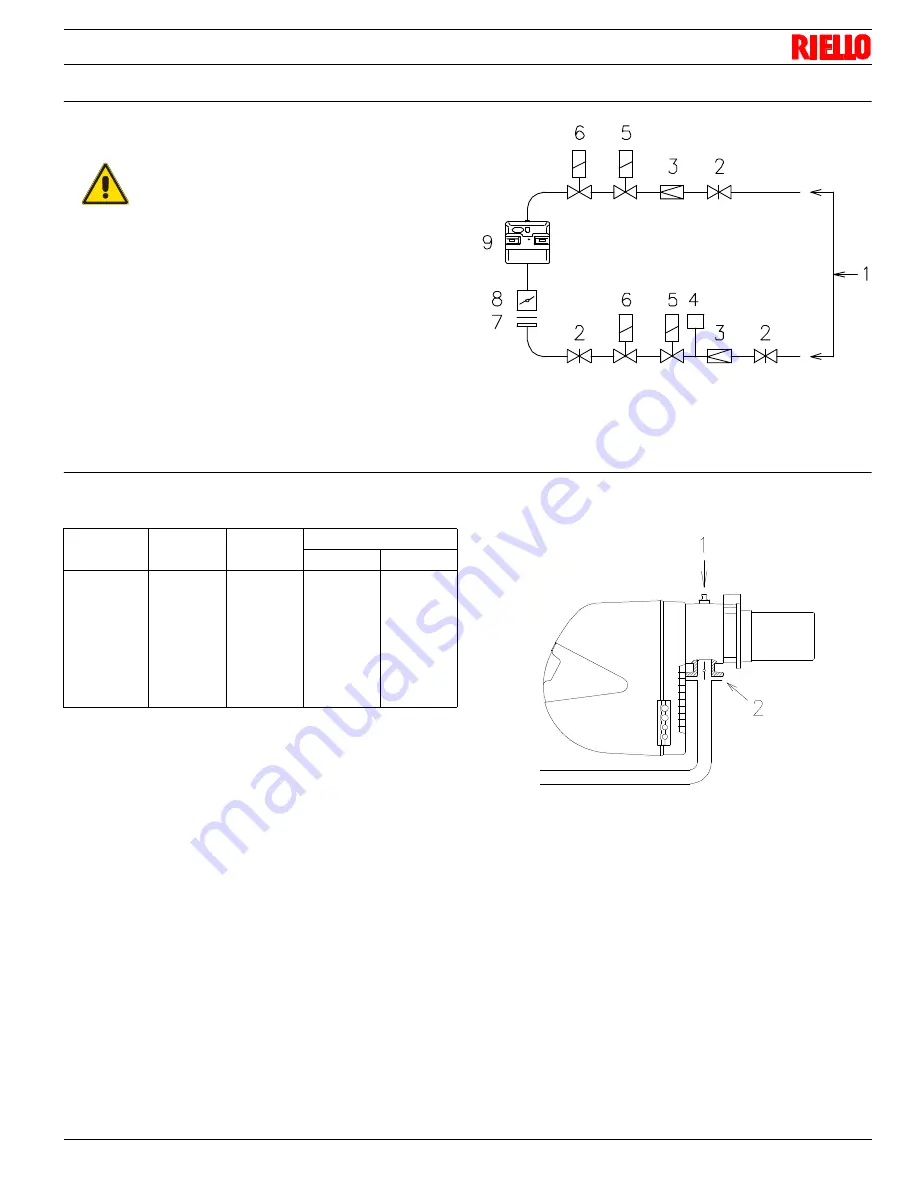
Installation
21
20053677
4.10 Gas train
It must be type-approved according to UL Standards and is sup-
plied separately from the burner.
Key to layout
1
Gas input pipe
2
Manual valve
3
Pressure regulator
4
Low gas pressure switch
5
1
st
safety shut off valve
6
2
nd
safety shut off valve
7
Standard issue burner gasket with flange
8
Gas adjustment butterfly valve
9
Burner
4.11
Gas pressure
The Tab. I is used to calculate manifold pressure taking into ac-
count combustion chamber pressure.
Tab. I
Gas manifold pressure measured at test point 1)(Fig. 19), with:
–
combustion chamber at 0” WC;
–
burner operating at maximum output;
–
column A (Tab. I): gas ring 2)(Fig. 13) adjusted as indicated in
diagram (Fig. 14).
–
column B (Tab. I): gas ring 2)(Fig. 13) adjusted to zero.
Calculate the approximate maximum output of the burner as fol-
lows:
subtract the combustion chamber pressure from the gas pres-
sure measured at test point 1)(Fig. 19);
find the nearest pressure value to your result in column A or B
(Tab. I) for the burner in question;
read off the corresponding output on the left.
Example with natural gas
–
Maximum output operation
–
Gas ring 2)(Fig. 13) adjusted as indicated in diagram (Fig. 14)
–
Gas pressure at test point 1)(Fig. 19)
= 2.48“ WC
–
Pressure in combustion chamber
= 0.79“ WC
2.48 - 0.79
= 1.69“ WC
A maximum output of 1552 MBtu/hr shown in Tab. I corresponds to
1.69” WC pressure, column A.
This value serves as a rough guide, the effective delivery must be
measured at the gas meter.
WARNING
See the accompanying instructions for the ad-
justment of the gas train.
Fig. 18
D2294
GAS PILOT LINE
MAIN GAS LINE
Model
MBtu/hr
kW
p (“ WC)
A
B
RS 50/E
1099
1249
1402
1552
1706
1856
2006
2197
322
366
411
455
500
544
588
644
0.87
1.14
1.42
1.69
1.97
2.2
2.48
2.83
0.87
1.3
1.61
2.01
2.36
2.76
3.15
3.78
Fig. 19
D2786
















































